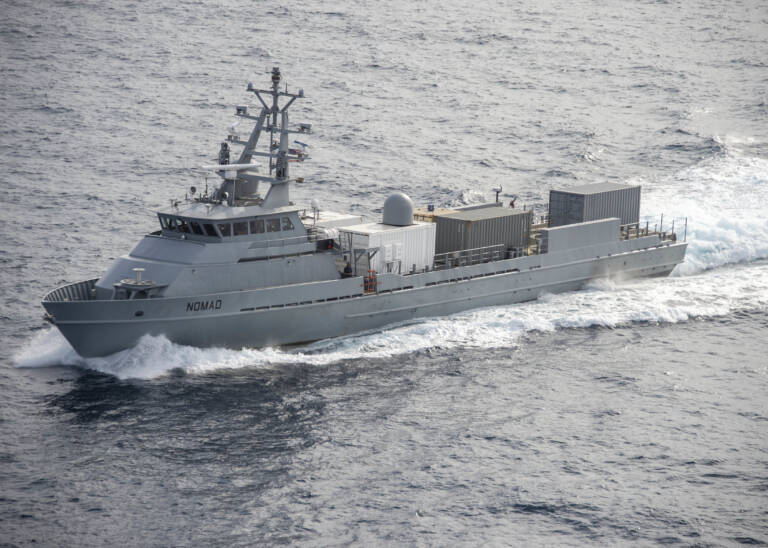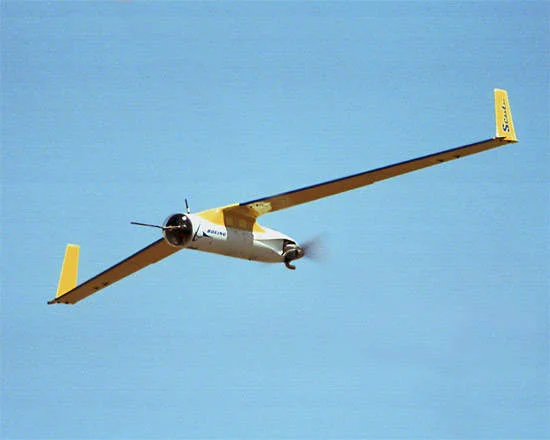How the Navy wants to introduce drones into its equipment

Commander Mauro Ghezzi – Head of the Naval Unit Interface Section of the Studies and New Programs Office, within the Naval Aviation Department of the General Staff of the Italian Navy. He gave an idea of how the Italian Navy intends to proceed with the integration of drones in your business . Thanks to the use of these systems, said Commander Ghezzi, “we can change and reshape the maritime security landscape”.
Here, unmanned systems present both opportunities and challenges. In the first case, UAS , aeronautical drones, can help improve the ability to detect and respond to threats, enabling proactive, timely and flexible action in a rapidly evolving maritime domain, said Commander Ghezzi. In the latter context, he recalled the Red Sea naval crisis, in which Yemen-based Ansar Allah (Houthi) rebels are using UAS and unmanned surface vessels (USVs) to attack commercial and naval vessels in the Red Sea corridor Red/Bab-al-Mandeb/Gulf of Aden.
As for building its own unmanned system, the Navy is proceeding with the first phase of a three-phase roadmap.
- A first phase which materializes with the use of the Boeing Insitu ScanEagle fixed-wing UAS on board the Italian Navy's flotilla of frigates. The first flight by the FREMM ITS Carlo Bergamini frigate was carried out in November 2023, to provide an initial capability. ScanEagle is operated from an embarked Ground Control Station (GCS): integration of the GCS into the ship's wider Combat Management System (CMS) is part of future capability development plans. Launched via catapult and recovered via a docking mechanism, ScanEagle provides line-of-sight intelligence, surveillance and reconnaissance (ISR) capabilities up to 50 miles with a flight time of 17 hours. The Navy's current plans call for ScanEagle to be deployed on at least 50 percent of the frigate fleet and perhaps, in due course, also aboard the destroyer flotilla. Phase One also includes the exploration and development of a rotary-wing UAS (RUAS) capability. The Navy is in the early stages of this program, which includes the purchase of Leonardo AWHero tactical RUAS and a control capability designed for CMS integration. Sea trials are scheduled for late 2024 or 2025, Commander Ghezzi said. The AWHero is a heavy vertical take-off and landing (VTOL) drone that offers a number of payload options, including radar, electronic support measures (ESM), and data communications/relays.
- For Phase Two, Commander Ghezzi explained, the Navy is looking for “UAS that can take off and land vertically, but with a propeller that pushes forward to change the vertical profile to horizontal”. These systems potentially offer a reduced footprint on board the ship. “We don't have a candidate yet: we are looking for a solution,” declared Commander Ghezzi. A first candidate system is expected to be certified in 2025, before starting integration and on-board testing. The Navy's development of the VTOL UAS capability includes evaluation of two additional classes of UAS, Commander Ghezzi explained. The first is that of a UAS that weighs 50-100 kg and is capable of providing ISR (reconnaissance and intelligence) and electro-optical (EO) capabilities; the second is that of a lighter UAS, which weighs up to 12 kg and has a duration of five hours. According to Commander Ghezzi, the Navy has not yet decided which systems to candidate, although in both cases the focus is on systems with a reduced on-board footprint. In addition to evaluating Italian UAS systems, the Navy is considering international candidates. In November 2023, the Navy witnessed the British Royal Navy's (RN) test of a General Atomics MQ-9B Mojave short take-off/landing remotely piloted aircraft system (RPAS) aboard the RN aircraft carrier HMS Prince of Wales. The Navy's interest in the system includes the ability to provide an airborne early warning (AEW) system. “It could be a very viable solution that would not only give us the ability to [conduct] the AEW mission, but we could start talking about loitering munitions, about kinetic capabilities,” Commander Ghezzi said. “We will therefore follow this development.”
- Phase Three, a long-term evaluation process expected to begin in 2029-30, involves the construction of ships designed for integrated unmanned operations , Commander Ghezzi explained. “We will progressively shift our center of gravity from a naval system… to a combat system. So, there will be a ship and a drone as a combat system,” he continued. “Future ships of our naval vision will have an unmanned management system, which will be able to command and manage unmanned aerial assets, unmanned surface assets and even unmanned underwater assets.”
In all three phases, the Navy will address key integration challenges, including the integration of ship and UAS operations (particularly to provide real-time command and control and data exchange) and UAS and helicopter operations with crew. In addition to deploying UAS on board frigates and destroyers, the Navy aspires to have such capabilities also for the Multipurpose Offshore Patrol (PPA) and aircraft carriers.

Thanks to our Telegram channel you can stay updated on the publication of new Economic Scenarios articles.
The article How the Navy wants to introduce drones into its equipment comes from Economic Scenarios .
This is a machine translation of a post published on Scenari Economici at the URL https://scenarieconomici.it/droni-nella-marina-militare-italiana/ on Mon, 12 Feb 2024 08:00:01 +0000.

